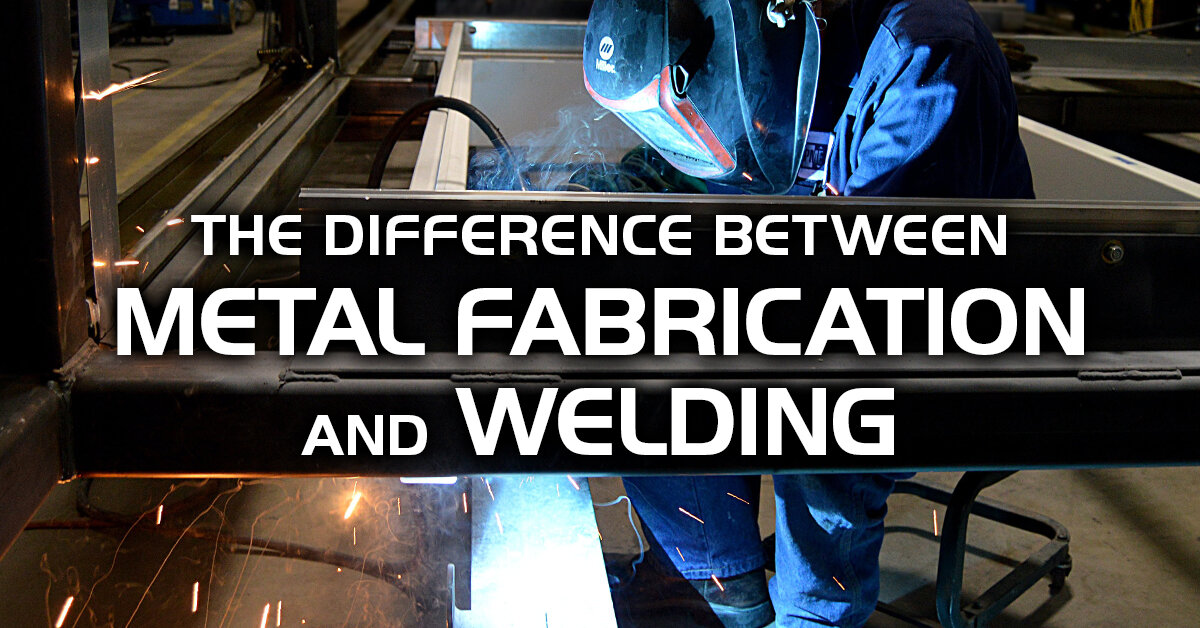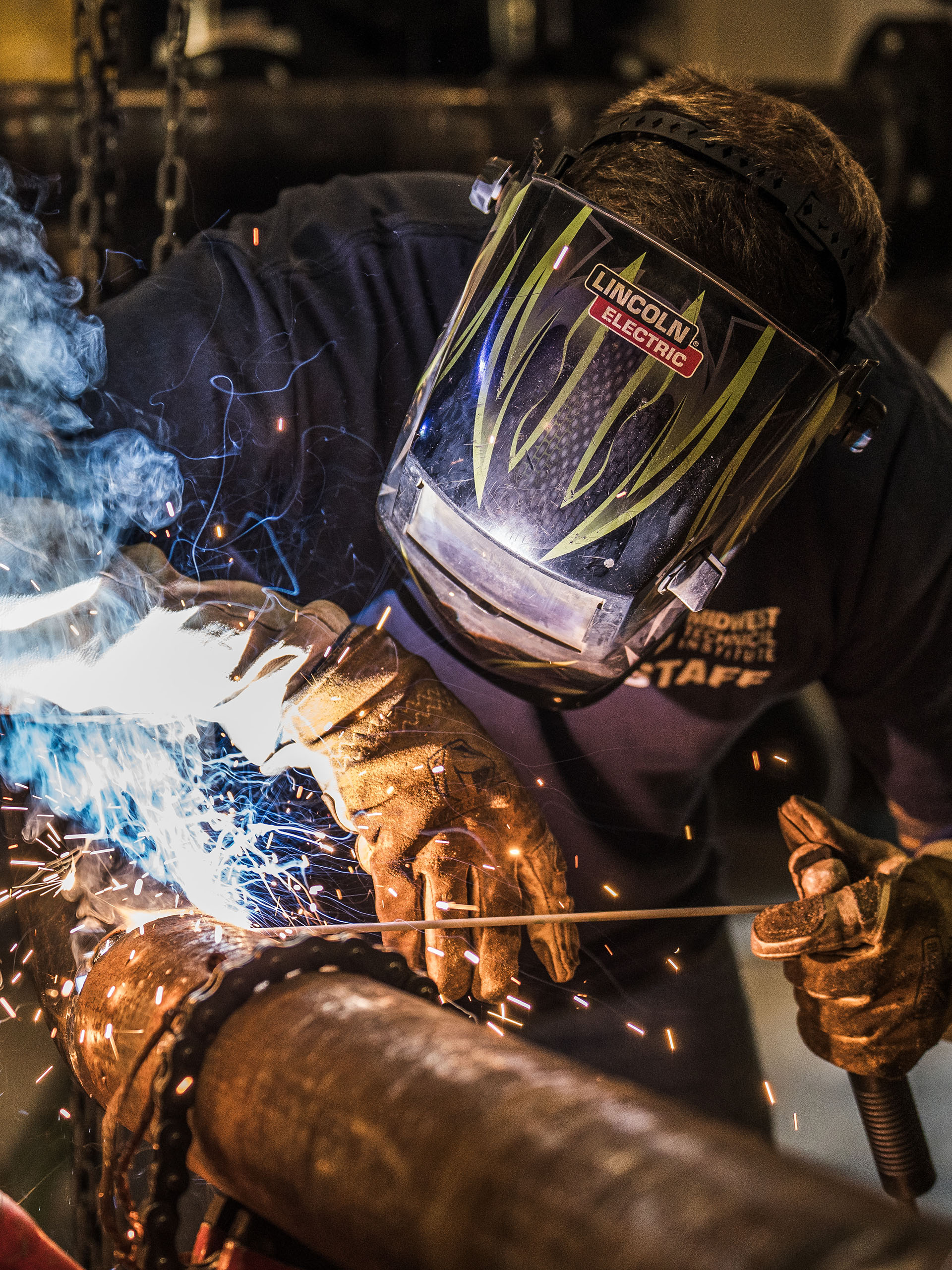Usual Welding Repair Issues and Just How to Address Them Effectively
Welding repairs usually come across a series of problems that can jeopardize the integrity of the final item. Usual issues consist of poor infiltration, porosity, and imbalance, among others. Each issue presents unique challenges that require certain methods for resolution. Recognizing these problems is important for welders intending to boost their results and abilities. This conversation will discover these usual welding fixing concerns and effective methods to resolve them.
Poor Infiltration
Insufficient penetration occurs when the weld metal fails to totally fuse with the base product, leading to weak joints and prospective architectural failures. This concern often originates from insufficient warmth input, wrong electrode angle, or improper welding rate. Welders may experience poor infiltration as a result of a miscalculation of the necessary parameters for a specific product density or kind. In addition, contamination on the base product's surface can impede reliable bonding, intensifying the trouble. To deal with insufficient infiltration, welders should assure ideal settings on their devices and maintain a tidy job surface. Normal assessment of welds is recommended to identify any type of shortages early, enabling timely corrections and the prevention of compromised architectural stability in bonded assemblies.
Porosity
Porosity is a typical flaw in bonded joints that manifests as small gas bubbles entraped within the weld metal. This problem can endanger the integrity of the weld, causing decreased stamina and possible failing under anxiety. Montana Mobile Welding and Repair Belgrade Welding. Porosity commonly arises from contamination, moisture, or inappropriate welding strategies, which enable gases to get away into the molten weld pool. To deal with porosity, welders must assure correct surface prep work, keep a clean workplace, and utilize appropriate welding parameters. Furthermore, picking the right filler material and protecting gas can reduce gas entrapment. Routine inspection and testing of welds can aid recognize porosity early, ensuring prompt corrective actions are taken, consequently maintaining the quality and dependability of the bonded structure
Imbalance
Misalignment in welding can occur from different elements, including inappropriate configuration and thermal expansion. Understanding the origin is important for effective resolution. Numerous improvement strategies are offered to realign components and guarantee architectural stability.
Causes of Misalignment
Welding misalignment usually originates from a range of underlying problems that can jeopardize architectural integrity. One primary cause is improper fit-up of parts prior to welding, which can cause gaps and uneven surface areas. Variations in thermal development during the welding procedure can additionally lead to distortion, specifically if the products being joined have various coefficients of growth. Additionally, inadequate fixturing and securing may stop working to hold parts securely in position, causing motion throughout welding. Inadequately conserved equipment, consisting of welding devices and devices, might present inconsistencies in the weld grain, additional adding to imbalance. Operator error, stemming from not enough training or experience, can also play a substantial role in producing misaligned welds.

Adjustment Methods Offered
Addressing imbalance successfully calls for a mix of corrective techniques customized to the details issues handy. One usual method is the usage of fixtures or jigs to hold elements in the appropriate placement throughout welding, guaranteeing constant positioning. In addition, pre-heating the products can help in reducing distortion and enhance fit-up. For substantial misalignment, mechanical realignment methods, such as utilizing hydraulic jacks or clamps, can be employed to remedy the setting before welding. Post-weld warmth treatment might likewise be needed to ease tensions brought on by misalignment. Careful inspection and adjustment throughout the setup phase can protect against misalignment concerns from coming to be substantial problems, advertising a smoother welding process and boosting general architectural honesty.
Distortion
Distortion is an usual difficulty in welding that can develop from various aspects, consisting of irregular heating & cooling. Comprehending the root causes of distortion is vital for implementing effective avoidance techniques. Resolving this problem not only improves structural stability however additionally improves the general top quality of the weld.
Root causes of Distortion
When based on the extreme warmth of welding, products typically undertake changes that can lead to distortion. This sensation mainly arises from thermal development and tightening throughout the welding process. As the weld area warms up, the product increases; upon air conditioning, it gets, which can create interior stress and anxieties. In addition, unequal home heating throughout a work surface can intensify these anxieties, leading to bending or flexing. The sort of product also plays a considerable role; steels with differing thermal conductivity and coefficients of growth may respond in different ways, leading to unforeseeable distortions. Moreover, poor joint style and poor fixturing can add to imbalance throughout welding, increasing the likelihood of distortion. Understanding these causes is important for reliable welding repair and avoidance approaches.
Prevention Techniques
Reliable prevention techniques for distortion during welding concentrate on regulating heat input and ensuring appropriate joint layout. Keeping a consistent warm input helps to reduce thermal growth and tightening, which can result in distortion. Using strategies such as preheating the workpiece can likewise minimize the temperature level slope, advertising uniform home heating. Furthermore, selecting proper joint layouts, such as T-joints or lap joints, can boost stability and lower anxiety concentrations. Executing appropriate fixturing to safeguard the work surfaces in place better help in maintaining positioning during the welding procedure. Finally, staggered welding sequences can distribute warmth a lot more evenly, stopping localized distortion. By applying these techniques, welders can significantly reduce the probability of distortion and improve the total top quality of their welds.
Splitting
Breaking is a common concern experienced in welding repair work, frequently arising from numerous elements such as improper air conditioning prices, product option, or poor joint preparation. The event of splits can considerably endanger the honesty of the weld, resulting in potential failures throughout operation. To address this problem, welders should initially assess the origin causes, guaranteeing that materials are compatible and properly selected for the specific application. Furthermore, controlling the air conditioning price during the welding procedure is vital; rapid air conditioning can induce anxiety and cause breaking. Correct joint style and preparation likewise add to decreasing the danger. Carrying out these methods can improve weld high quality and longevity, eventually minimizing the possibility of fracturing in finished weldments.

Incomplete Blend
A considerable concern in welding repair services is insufficient blend, which occurs when the weld steel does not adequately bond with the base material or previous weld passes - Montana Mobile Welding and Repair Welding. This problem can lead to weak points in the joint, possibly compromising the honesty of the bonded structure. Factors contributing to insufficient combination include not enough warm input, incorrect welding strategy, and contamination of the surfaces being signed up with. To address this problem properly, welders need to assure correct pre-weld cleansing and surface preparation, along with change their welding parameters to achieve appropriate infiltration and linked here combination. Normal evaluation throughout the welding process can additionally assist identify incomplete blend early, enabling for prompt restorative steps to improve the general high quality of the weld
Overheating
While welding repair work can boost architectural integrity, overheating provides a considerable difficulty that can lead to product deterioration. Excessive warmth throughout welding can modify the mechanical residential properties of steels, causing minimized strength, raised brittleness, and bending. This phenomenon is especially essential in high-stress applications where architectural reliability is paramount. Identifying overheating can involve aesthetic evaluations for staining or distortion, along with keeping track of temperature throughout the welding process. To mitigate the threats related to overheating, welders ought to employ suitable methods, such as controlling warmth input, readjusting travel speed, and making use of ideal filler materials. In addition, executing pre- and post-weld warmth treatments can help recover product buildings and enhance the overall high quality of the repair work, making sure long-term efficiency and security.
Regularly Asked Questions
What Are the Common Signs of a Welding Issue?
Just How Can I Evaluate My Welds for Top quality?
To evaluate welds for top quality, one can utilize visual inspections, ultrasonic testing, and radiographic techniques. Each method guarantees structural integrity, determines flaws, and confirms adherence to you could try these out specified criteria, ultimately boosting the integrity of the welded joints.
What Safety Safety Measures Should I Take While Welding?
When welding, one must focus on safety and security by putting on suitable personal protective tools, making certain correct ventilation, securing combustible products away, preserving a tidy workspace, and knowing surroundings to stop injuries and mishaps.
Can I Repair a Weld Without Redoing the Entire Joint?
Fixing a weld without redesigning the whole joint is feasible, depending upon the damage (Belgrade). Methods such as grinding, adding filler product, or making use of a welding process can efficiently attend to specific defects while maintaining the surrounding structure
What Tools Are Important for Reliable Welding Fixes?
Vital devices for efficient welding repairs include a welding machine, cable brush, mill, safety equipment, clamps, and filler materials. Each device plays a crucial role in guaranteeing high quality and safety and security throughout the repair work process. Porosity generally arises from contamination, wetness, or inappropriate welding methods, which permit gases to escape right into the liquified weld pool. Inadequately kept equipment, including welding equipments and devices, may introduce click site incongruities in the weld grain, additional adding to misalignment. When subjected to the extreme warm of welding, materials commonly undergo modifications that can lead to distortion. Splitting is an usual concern come across in welding repairs, commonly resulting from various aspects such as inappropriate air conditioning rates, material choice, or poor joint prep work. A considerable concern in welding repair services is incomplete combination, which takes place when the weld metal does not adequately bond with the base material or previous weld passes.